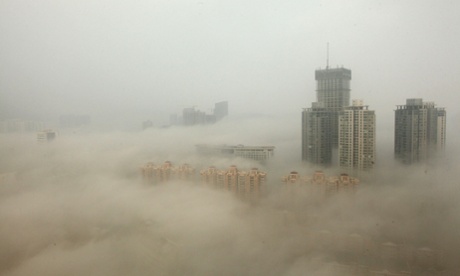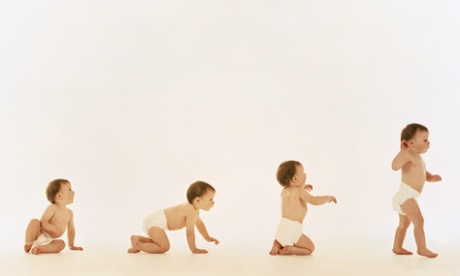This feature is part of a series of articles on the circular economy published by the Dialogue business journal.
From dried-up rivers to smog-filled cities, China is contending with the negative environmental effects of its super-fast industrialisation of recent decades.
As of January, air pollution in Beijing had soared to 40 times the level recommended by the World Health Organization, according to The Economist, and the country is expected to produce twice as many carbon emissions as the US by 2015. Some 40% of China's mammals are classified as threatened species. The country is also under severe water stress. At the same time, China's growing economy is ravenously hungry for resources, consuming between 40% and 50% of the world's coal, copper, steel, nickel, aluminium and zinc.
There are signs that the Chinese government and industry are looking into more restorative economic models to help solve these problems. One of these is the circular economy, which encourages manufacturers to design products and systems such that they can be returned and the materials recycled, reused or remanufactured. It is about being smarter on a number of fronts:
• Increasing resource productivity by using raw material in longer and linked product lifecycle loops, enabling long-term growth and development
• Managing water to make sure it's recycled during manufacturing, cleaned to a high standard and returned to the local sources
• Making sure the materials used to make products contain the healthiest possible chemicals for humans and the environment and that they can be collected and safely recycled later
• Designing out waste, a critical factor as the world economy continues to use up and waste a high proportion of its finite natural resources
In their 2002 book, Cradle to Cradle, William McDonough and Michael Braungart framed the idea of designing products to have positive health, environmental and social benefits, and to end up not as waste, but as materials for new products. In their latest book, The Upcycle, they wrote:
"Human beings don't have a pollution problem; they have a design problem. If humans were to devise products, tools, furniture, homes, factories, and cities more intelligently from the start, they wouldn't even need to think in terms of waste, contamination, or scarcity … Good design would allow for abundance, endless reuse, and pleasure."
Can China move fast enough?
The biggest challenge may be reversing some of these environmental trends fast enough. Developing complex, circular economy systems takes time. However, the country already is seeing signs of rapid growth in the popularity of this concept.
For one thing, the China Association of Circular Economy – a group of government, research and business members working to promote the growth of the circular economy mainly through recycling – launched at the end of last year. The association claims that China's circular economy grew by 15% annually, on average, from 2006 to 2010, and projects it will almost double from 1tn yuan ($164.13bn) in 2010 to 1.8tn yuan ($295.42bn) in 2015.
As Peter Lacy, who leads Accenture's strategy and sustainability practice in the Asia Pacific, puts it:
"With demand for resources in China growing more than twice as fast as the world average, we see disruptive innovation in circular approaches to production and consumption and the emergence of new business models. Our research shows that in the coming decade between 6m and 7m jobs will be created in the circular economy in China alone. And we are only just beginning."
Recycling
One of the first things China has done is establish industrial parks to recycle waste, such as the Tianjin Ziya Circular Economy Industrial Park in south-west Jinghai County, near the Hebei province. Opened in 2006, the park houses 120 companies with a capacity to recycle 1m to 1.5m tons of waste, including electronics, vehicles, rubber and plastic. Every year, it can supply 400,000 tons of copper and 150,000 tons of aluminium, among other materials.
Tianjin Ziya also has created an "engineering island", which brings together energy savings and environmental protection by integrating sewage collection treatment, water reuse and rain collection. It is now reusing 100% of its water, without harming the desert environment.
Meanwhile, China has reportedly put up a "green fence" and has stopped accepting poorly sorted or dirty shipments of the waste materials from foreign exporters.
Designing out waste
Other Chinese companies have found innovative ways to fully utlize their raw materials. Shanghai-based steel company Baosteel, for example, has – through its subsidiary Baosteel Magnetic – found a way to make use of the metals, including rust (or, more properly, red (ferric) iron oxide and iron oxide scales) and zinc residue, that accumulate on magnetic materials. Products made from those metals are used in computers, green lighting, high-definition displays and automotive electronics fields, among other things. The company also has developed iron oxide material suitable for phosphate-acid-iron-lithium batteries.
Meanwhile, the Shandong Tranlin Group, a pulp paper manufacturer, has developed a straw cleansing pulping technology that can process straw for use in its paper products and even "upcycle" residuals from the straw pulping process into organic fertiliser.
Reducing toxicity
Aside from recycling and designing out waste, another key aspect of the circular economy is the idea of promoting non-toxic materials. Cradle to Cradle certification, for example, requires specific processes to ensure the materials designed into products contain the best available chemicals, as assessed against a set of human health and environmental criteria.
Goodbaby, a Chinese manufacturer of strollers, high chairs, cribs and children's car seats based near Shanghai, has been developing Cradle to Cradle products since 2010. Advised by the European consultancy EPEA and founded by Braungart, Goodbaby has a blueprint to get all its products C2C certified by 2020.
What's next?
So, is the circular economy taking off in China? It's under discussion.
The topic of scaling up the circular economy was on the agenda at the annual New Champions summit held in China by the World Economic Forum. In 2013, business leaders from foreign and local companies (including me), management consultants, environmentalists, researchers and politicians met in Dalian to discuss the circular economy. Discussions will continue in Davos this month.
China's fast economic growth and the negative environmental repercussions have prompted government officials to promote ambitious green projects in the years ahead, backed by significant investment. If they choose to continue to support circular-economy concepts, we could see the country take a global lead in this area – to the benefit of all of us.
Alexander Collot d'Escury is the CEO of Desso, a global carpets, carpet-tiles and sports-pitches company










